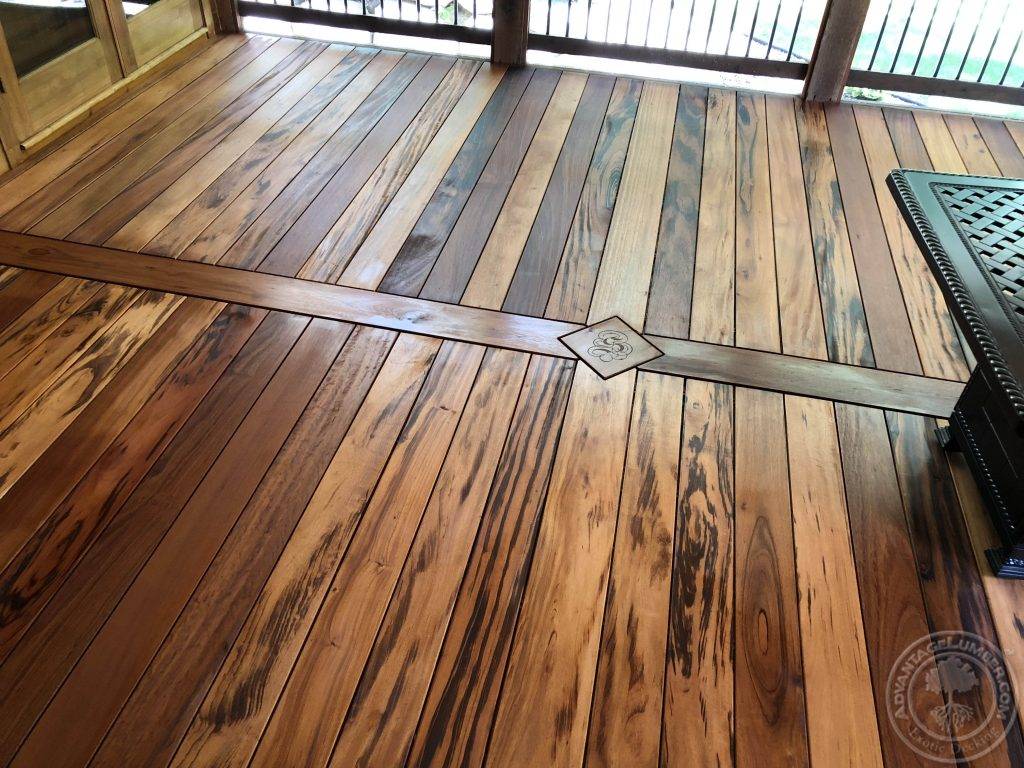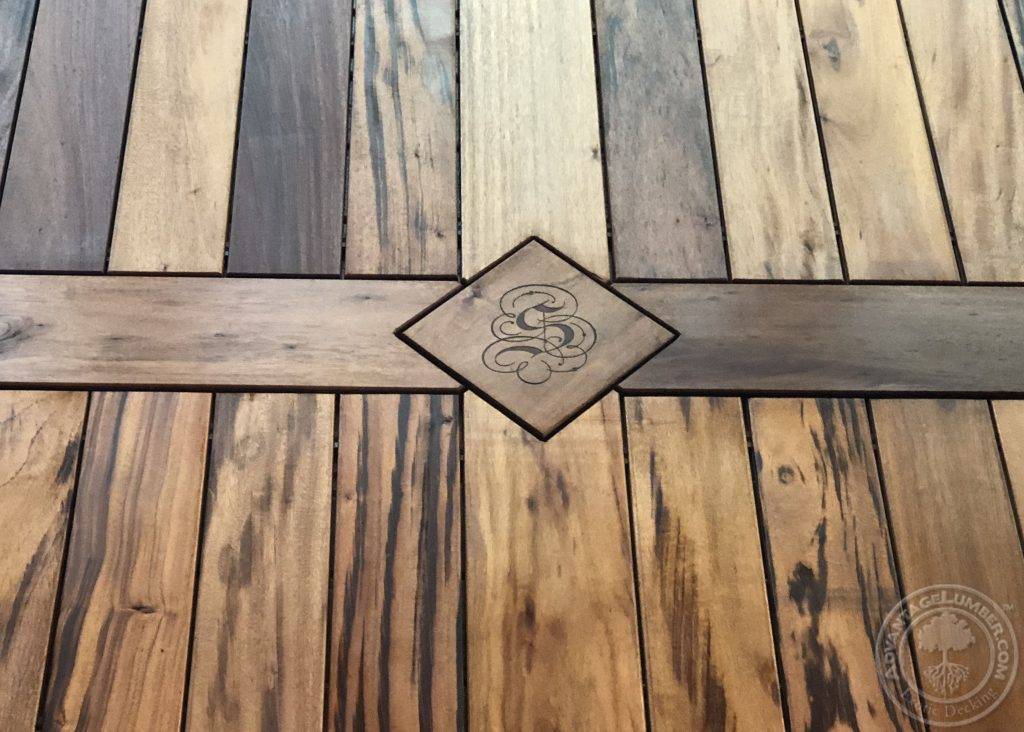Read This Before Installing Cedar Decking on Your House!
One of our customers just installed this Tigerwood deck for his clients who previously had a cedar deck. Their cedar deck was installed for a little over 20 years and required constant maintenance with power washing and sealing with a waterproofing sealer.
Although cedar has moderate rot resistance it is still a softwood that requires a waterproofing sealer especially on horizontal surfaces like a deck where the water sits on the surface longer. Tigerwood decking and other South American hardwoods offer a much longer lifespan, so the contractor advised the homeowner this would be a better option than going with cedar again.
Western red cedar has a janka hardness of 350 lbf opposed to Tigerwood which has a janka hardness of 2,170 lbf. To put it simply the janka test is a measuring system to determine the hardness of wood and the higher the number the harder the wood.
The hardness of Tigerwood gives the wood a very tight and dense grain structure which makes the wood very smooth. It also has excellent resistance to rot and decay as well as being highly resistant to wood boring insects. Tigerwood is so hard that wood boring insects can not chew through it. Opposed to cedar on the other hand which has shown to be somewhat prone to wood boring insects.
Cedar usually contains knots and a rough surface with slivers due to it being a softwood the grain is more prone to surface imperfections that make it less desirable to walk on barefoot. You can sand cedar to help with this however as time goes on the grain can raise again and slivers and splits can reappear.
Clear cedar is available at a premium which does not contain knots and will give you a more desirable surface than common grade cedar.
Tigerwood on the other hand offers a very smooth surface free from knots and slivers and is naturally resistant to rot, decay and wood boring insects. In addition the maintenance on Tigerwood is significantly less than cedar.
Cedar Deck Maintenance
Cedar decks need a waterproofing sealer which will eventually peel off leaving you with sanding or power washing the old coating off. Then you must reapply at least two coats of new sealer to ensure everything is coated.
Tigerwood Deck Maintenance
With Tigerwood if you want to maintain the beautiful color you simply oil it with a UV oil meant for hardwoods such as Ipe Oil. This basically keeps the sun from bleaching the color out of the wood and turning it grey.
The oil is very easy to apply you can roll it on with a paint roller and wipe up any excess that hasn’t soaked in after 5 minutes. As the color starts to fade make sure your deck is clean and free from debris and reapply.
There is no stripping off the old finish or any flaking or peeling to deal with. If you prefer the grey look you don’t have to do anything other than cleaning debris such as leaves off.

The contractor surprised his customers with this detail that they absolutely loved. He laser engraved their last initial in the center trim piece of the deck.

Hello,
I like the Tigerwood, so of course It will be the most expensive item you have. I’ll be doing an upper and lower deck, one about 15X16 and 16X16. Also does it come in 5″ wide planks? Can you give me a ball park figure please.
Actually, ipe is our most expensive specie; tigerwood isn’t that bad! You can see all our tigerwood pricing here: https://www.advantagelumber.com/tigerwood_decking.htm
We have tigerwood in x6 (5.5″ wide) in a variety of thicknesses and profiles. For basic 1×6 boards, you’d be looking at a total of about $982.08 (as of the time of this writing). Give us a call if you have any more questions: 1-877-232-3915